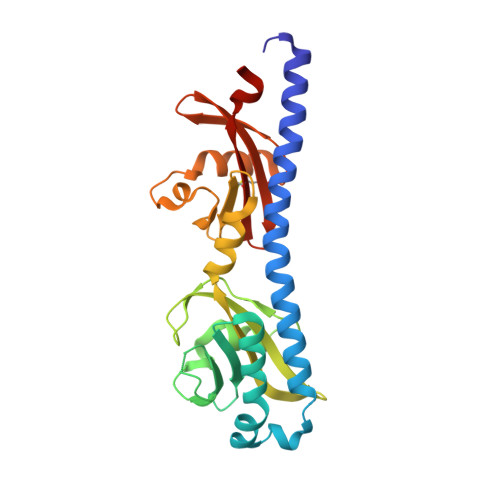Structure-Activity Relationship Study Reveals the Molecular Basis for Specific Sensing of Hydrophobic Amino Acids by theCampylobacter jejuniChemoreceptor Tlp3.
Khan, M.F., Machuca, M.A., Rahman, M.M., Koc, C., Norton, R.S., Smith, B.J., Roujeinikova, A.(2020) Biomolecules 10
- PubMed: 32403336
- DOI: https://doi.org/10.3390/biom10050744
- Primary Citation of Related Structures:
6W3O, 6W3P, 6W3R, 6W3S, 6W3T, 6W3V, 6W3X, 6W3Y - PubMed Abstract:
Chemotaxis is an important virulence factor of the foodborne pathogen Campylobacter jejuni . Inactivation of chemoreceptor Tlp3 reduces the ability of C. jejuni to invade human and chicken cells and to colonise the jejunal mucosa of mice. Knowledge of the structure of the ligand-binding domain (LBD) of Tlp3 in complex with its ligands is essential for a full understanding of the molecular recognition underpinning chemotaxis. To date, the only structure in complex with a signal molecule is Tlp3 LBD bound to isoleucine. Here, we used in vitro and in silico screening to identify eight additional small molecules that signal through Tlp3 as attractants by directly binding to its LBD, and determined the crystal structures of their complexes. All new ligands (leucine, valine, α-amino-N-valeric acid, 4-methylisoleucine, β-methylnorleucine, 3-methylisoleucine, alanine, and phenylalanine) are nonpolar amino acids chemically and structurally similar to isoleucine. X-ray crystallographic analysis revealed the hydrophobic side-chain binding pocket and conserved protein residues that interact with the ammonium and carboxylate groups of the ligands determine the specificity of this chemoreceptor. The uptake of hydrophobic amino acids plays an important role in intestinal colonisation by C. jejuni , and our study suggests that C. jejuni seeks out hydrophobic amino acids using chemotaxis.
- Infection and Immunity Program, Monash Biomedicine Discovery Institute, Clayton, Victoria 3800, Australia.
Organizational Affiliation:




















